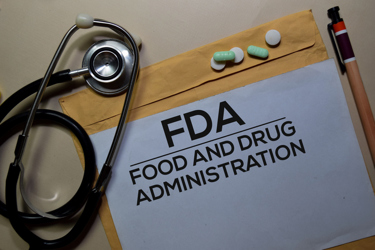FDA Issues New Draft Guidances On Cancer Clinical Trial Eligibility Criteria
By Marjorie Zettler, Ph.D., MPH, consultant, clinical sciences, Conjugate Group

A recent publication in NEJM Evidence investigated the impact of modifying eligibility criteria for a hypothetical cancer clinical trial on the characteristics of the trial participants.1 Using the de-identified EHRs of over 235,000 patients in the U.S. who were receiving systemic therapy for cancer, the authors first applied strict eligibility criteria using common trial cutoffs for performance status as well as liver, kidney, and hematologic function at the time of the start of the first line of therapy. Only 48% of patients were eligible for the trial when using the strict criteria, but when those criteria were broadened, the number of eligible patients increased by 78%. The characteristics of the patients excluded by the strict criteria aligned with historically underrepresented groups, including those patients who were older, female, Latinx, or non-Latinx Black, and those with lower socioeconomic status. The criteria with the greatest impact (when relaxed) on increasing the number of eligible patients by demographics were creatinine clearance, estimated glomerular filtration rate, Eastern Cooperative Oncology Group (ECOG) performance status, and hemoglobin.1 This study illustrates the tremendous potential of leveraging eligibility criteria to optimize representation in clinical trials for oncology drugs.
Overly restrictive eligibility criteria are well-established barriers contributing to lack of clinical and demographic diversity in cancer clinical trials.2,3 While the use of strict eligibility criteria may arise out of a sponsor’s well-intentioned motivation to protect patient safety, in some cases these criteria have continued to be employed based on historical precedent, even though they may not be relevant to the particular drug, trial, or indication under study. The unintended consequences of unnecessarily restrictive and complex eligibility criteria include hindered trial accrual and study results that do not accurately reflect the treatment benefits and risks across the patient population as a whole. Recent estimates suggest that the overall participation rate in cancer treatment trials in the U.S. is only 7.1%, and significant disparities exist between these participants and the indicated patient populations.4-6
In April, the FDA published three new draft guidances on cancer clinical trial eligibility criteria, addressing washout periods and concomitant medications, performance status, and laboratory values.7-9 These guidances expand on concepts first introduced in the 2020 guidance Enhancing the Diversity of Clinical Trial Populations – Eligibility Criteria, Enrollment Practices, and Trial Designs.10 Recommendations are tailored specifically to cancer clinical trials and add to a growing list of FDA guidance documents aimed at improving the representativeness of cancer clinical trial participants.11-15
The through lines in the new draft guidance documents are the ideas that eligibility criteria should be (1) determined and justified based on scientific data; (2) specific to the trial, the indication, and the investigational therapy; and (3) revisited throughout the clinical development program as more data accumulates.
Some recommendations from the three new guidance documents include:
- Basing washout periods on the known pharmacokinetics/pharmacodynamics (PK/PD) of the previous treatment or clinical/laboratory parameters related to the prior treatment, rather than an arbitrary number of days.
- Excluding concomitant medications only when drug-drug interactions are known or predicted and will impact patient safety.
- Modifying either the dosage of the investigational drug or the concomitant medication to allow continued use as needed during the trial.
- Including patients with low-performance status (ECOG performance status of 2, or Karnofsky Performance Status [KPS] of 60-70) in trials unless a scientific rationale exists for exclusion (based on experience in prior trials of the same agent or other drugs with the same mechanism of action).
- Considering alternative trial designs where concerns exist about including patients with low-performance status (e.g., adding a small exploratory cohort of patients with low-performance status to the trial but excluding this cohort from the primary analysis).
- Considering the inclusion of other measures of functional status (beyond ECOG performance status or KPS) in trials, such as patient-reported outcomes of physical function and role function or comprehensive geriatric assessment tools.
- Customizing eligibility criteria based on laboratory values to the specific drug (considering the PK/PD, mechanism of action, and known toxicities) and patient population (including known differences by demographics), and reassessing the criteria periodically throughout development as more information is gained.
- Considering allowance of single repeat laboratory tests within a certain time frame, as appropriate.
Some of these recommendations may be met with resistance from sponsors who wish to emulate the eligibility criteria utilized in trials of other therapies for the same indication in order to facilitate interpretation and cross-trial comparisons. Sponsors may also be reluctant to incorporate broader eligibility criteria that would allow enrollment of more patients with lower performance status or laboratory values indicative of organ dysfunction if they believe that doing so would have a detrimental impact on treatment outcomes. Although the guidance on performance status suggests that mitigating any potential increase in adverse events or decrease in survival could be achieved using a randomized trial design or pre-specifying a separate cohort for these patients that would be exempt from the primary analysis, both of these strategies would necessitate enrolling larger numbers of patients, which would incur greater costs and take additional time.
In addition, the practical application of some of these recommendations (such as the iterative reevaluation of eligibility criteria throughout a drug’s clinical development program) could prove challenging due to the compression of development timelines by expedited programs. Many oncology drugs are granted Accelerated Approval based on relatively small single-arm Phase 1-2 trials (sometimes a single trial) and clinical pharmacology studies may be incomplete at market entry. Significant knowledge gaps may still exist at the time of approval, leading to restrictive eligibility criteria being carried forward into confirmatory clinical trials.
Despite the challenges and limitations, the issuance of these draft guidance documents represents continued progress in the FDA’s ongoing commitment to improving diversity in cancer clinical trials. More inclusive trials provide greater access to novel therapies for patients with cancer and increase the probability that a trial will meet enrollment goals (a critical consideration given that approximately 20% of cancer clinical trials fail to be completed).16 Importantly, trials with representative participants are more likely to yield clinically meaningful results, with better generalizability to the indicated patient population.
References:
- Kaur M, Frahm F, Lu Y, Ascha MS, Guadamuz JS, Dotan E, et al. Broadening Eligibility Criteria and Diversity among Patients for Cancer Clinical Trials. NEJM Evid 2024;3(4). doi: 10.1056/EVIDoa2300236
- Kim ES, Bruinooge SS, Roberts S, Ison G, Lin NU, Gore L, et al. Broadening Eligibility Criteria to Make Clinical Trials More Representative: American Society of Clinical Oncology and Friends of Cancer Research Joint Research Statement. J Clin Oncol. 2017 Nov 20;35(33):3737-3744. doi: 10.1200/JCO.2017.73.7916.
- Kim ES, Uldrick TS, Schenkel C, Bruinooge SS, Harvey RD, Magnuson A, et al. Continuing to Broaden Eligibility Criteria to Make Clinical Trials More Representative and Inclusive: ASCO-Friends of Cancer Research Joint Research Statement. Clin Cancer Res. 2021 May 1;27(9):2394-2399. doi: 10.1158/1078-0432.CCR-20-3852.
- Unger JM, Shulman LN, Facktor MA, Nelson H, Fleury ME. National Estimates of the Participation of Patients With Cancer in Clinical Research Studies Based on Commission on Cancer Accreditation Data. J Clin Oncol. 2024 Apr 2:JCO2301030. doi: 10.1200/JCO.23.01030.
- Grant SR, Lin TA, Miller AB, Mainwaring W, Espinoza AF, Jethanandani A, et al. Racial and Ethnic Disparities Among Participants in US-Based Phase 3 Randomized Cancer Clinical Trials. JNCI Cancer Spectr. 2020 Jul 7;4(5):pkaa060. doi: 10.1093/jncics/pkaa060.
- Ludmir EB, Mainwaring W, Lin TA, Miller AB, Jethanandani A, Espinoza AF, et al. Factors Associated With Age Disparities Among Cancer Clinical Trial Participants. JAMA Oncol. 2019 Dec 1;5(12):1769-1773. doi: 10.1001/jamaoncol.2019.2055.
- FDA. Cancer Clinical Trial Eligibility Criteria: Washout Periods and Concomitant Medications. Draft Guidance for Industry, IRBs, and Clinical Investigators. April 2024. Accessed at: https://www.fda.gov/media/178016/download
- FDA. Cancer Clinical Trial Eligibility Criteria: Performance Status. Draft Guidance for Industry, IRBs, and Clinical Investigators. April 2024. Accessed at: https://www.fda.gov/media/178018/download
- FDA. Cancer Clinical Trial Eligibility Criteria: Laboratory Values. Draft Guidance for Industry, IRBs, and Clinical Investigators. April 2024. Accessed at: https://www.fda.gov/media/178013/download
- FDA. Enhancing the Diversity of Clinical Trial Populations – Eligibility Criteria, Enrollment Practices, and Trial Designs. Guidance for Industry. November 2020. Accessed at: https://www.fda.gov/media/127712/download
- FDA. Cancer Clinical Trial Eligibility Criteria: Brain Metastases. Guidance for Industry. July 2020. Accessed at: https://www.fda.gov/media/121317/download
- FDA. Cancer Clinical Trial Eligibility Criteria: Minimum Age Considerations for Inclusion of Pediatric Patients. Guidance for Industry and IRBs. July 2020. Accessed at: https://www.fda.gov/media/121318/download
- FDA. Cancer Clinical Trial Eligibility Criteria: Patients with HIV, Hepatitis B Virus, or Hepatitis C Virus Infections. Guidance for Industry. July 2020. Accessed at: https://www.fda.gov/media/121319/download
- FDA. Cancer Clinical Trial Eligibility Criteria: Patients with Organ Dysfunction or Prior or Concurrent Malignancies. Guidance for Industry. July 2020. Accessed at: https://www.fda.gov/media/123745/download
- FDA. Cancer Clinical Trial Eligibility Criteria: Available Therapy in Non-Curative Settings. Guidance for Industry. July 2022. Accessed at: https://www.fda.gov/media/150244/download
- Stensland KD, McBride RB, Latif A, Wisnivesky J, Hendricks R, Roper N, et al. Adult cancer clinical trials that fail to complete: an epidemic? J Natl Cancer Inst. 2014 Sep 4;106(9):dju229. doi: 10.1093/jnci/dju229.
 About The Author:
About The Author:
Marjorie Zettler, Ph.D., MPH is senior director of clinical science at Accutar Biotech and a 2022 Woman Worth Watching in STEM. An award-winning industry veteran with two decades' experience in clinical research, drug development, and regulatory strategy, she has published over 100 abstracts, manuscripts, book chapters, and patents.
